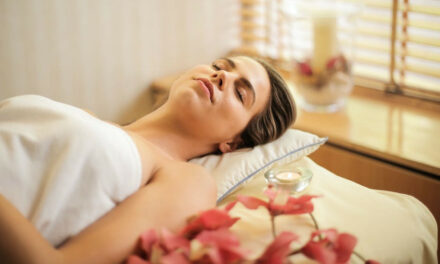In this comprehensive article, we delve into the concept of muscle elasticity, exploring its significance and providing actionable strategies to enhance it for a healthier life as we age gracefully. The ultimate goal is to answer the question ‘how to increase muscle elasticity? by sharing our strategies to increase muscle elasticity.
The human body is a blend of physics, geometry, psychology and such great stuff. Muscles are a part of our whole system, and in that capacity, whatever function they perform or whatever is going on, it doesn’t occur individually. There is an entire chain of procedures happening.
Having actively engaged with physiotherapists, fellow healthcare experts and enthusiasts, we’ve gained insights into the real-world applications of muscle elasticity enhancement techniques, especially as we grow and age. Our firsthand experience allows us to provide practical advice and recommendations grounded in both scientific knowledge and professional success in this are.
With a genuine commitment to promoting overall wellness and sharing valuable insights, we bring a holistic perspective to the realm of muscle health and elasticity enhancement. This experience-driven approach ensures that the strategies outlined in this article are not just theoretical but have been tested in real-world scenarios.
In this article, we are exploring ‘what is muscle elasticity?’ and how to increase muscle elasticity as an important aspect of our healthy lives as we grow older.
Properties Of A Muscle
The collagen present in the elastic element of the muscle has two types of behavior when subjected to a tensile force.
1. Elasticity
One of them is the elastic behavior of the muscle, which through the elastic tissue present in the muscle fiber returns the tissue to its original length when a tensile force is removed.
2. Plasticity
Another type of behavior is plastic, which allows the muscle to adapt to the kind of overload that is imposed on it beyond its elastic range, so structural changes occur in the tissue, such as the tissue does not fit and returns to the original length when force is removed.
3. Viscoelasticity
The muscle also has a combination of properties, viscoelasticity, which allows it to have elastic and viscous behavior simultaneously.
4. Flexibility
Unlike elasticity, viscoelasticity is time-dependent, so it acts on flexibility so that the muscle strain amplitude is proportional to both the applied force (elastic component) and the time it is applied (viscous component).
5. Stress Relaxation
Finally, when a resting muscle is stretched and kept at a constant length for a while, there is a loss of tension called stress relaxation, which is due to its viscoelasticity.
6. Extensibility
Therefore, among the biomechanical factors, it is important to know the role of these properties in determining the extensibility amplitude of the muscle-tendon unit, always observing that the amount of tissue damage during stretching will be determined by factors such as degree of strength, the velocity with that force is applied and the extent of time.
Here are the details in a summary table too.
| Property | Description and Significance |
|---|---|
| Elasticity | Muscle’s ability to return to its original length post-stretching. |
| Plasticity | Muscle’s adaptive behavior beyond its elastic range. |
| Viscoelasticity | Combined elastic and viscous behavior in response to force. |
| Flexibility | Time-dependent stretching influencing muscle strain amplitude. |
| Stress Relaxation | Tension loss in a resting muscle when stretched and held. |
| Extensibility | Determining muscle-tendon unit’s range based on biomechanics. |
Let’s look at the function of a muscle using those inherited characteristics.
Tip: Did you know Diabetes can affect your body muscles and its functions. Science has proven that Diabetes reduces body muscle mass in the long run. Therefore, it’s worth knowing the early warning signs of diabetes in women, men and children.
Functional Characteristics of a Muscle
Shortening-elongation cycle
If the concentric muscle action or shortening of a muscle, is preceded by eccentric muscle action (or pre-stretching), the resulting concentric action will be able to generate more force because of the elongation of the muscle. Muscle changes its characteristics by increasing its tension by storing potential elastic energy in the serial elastic component of the muscle. This pattern of eccentric contraction followed immediately by a concentric contraction is known as the shortening-elongation cycle.
What Happens When Muscle Shortens After Stretching?
Do you know what happens when muscle shortening contraction takes place during the time of 0.0 to 0.9 seconds after stretching? The elastic energy stored in your body recovers and becomes useful. But if you keep stretching for a longer period, the energy loses itself due to heat.
When your body muscles stretch completely, the muscle group stimulation occurs along with concentric muscle movement. This means, in the stretch-shortening cycle, elastic components contribute as well as neural components. Due to this process, the increase in concentric muscle action occurs for only 30% while the rest increases the energy for storage in the body.
Slow and Fast-twitch Fibers
One of the important factors in the stretch-shortening cycle is the types of fibers used in it. Slow and fast-twitch fibers give the response to the pre-stretching differently, and the stretching activity depends on them.
Muscles that possess fast fibers have more elastic energy as compared to slow fibers. In a short distance, they can pre-stretch at an extremely high speed. As in the fast-twitch fibers cross bridging of myosin takes place quickly, they can control the rapid elongation taking place.
Whereas, in slow-twitch fiber, cross-bridging occurs slowly and energy doesn’t get stored, which means that the small pre-elongation that takes place is of no advantage. But a benefit from the slow-twitch fiber is that of a vast range of motion from slow pre-stretching.
Irritability
When we can give the response to stimulation, it is called irritability. Chemical neurotransmitters are responsible for the stimulation of muscles. For movement, the type and quantity of fibers control stimulation in the skeletal muscle, which is an editable tissue.
Contractility
When stimulation in the muscle tissue is ample, the muscles can shorten, and this is called contractility. The distance on which the muscle shortening happens is finite due to the physical limitations of the human body.
50 to 70% is the shortening percentage of some muscles’ resting length. While 57 is the average percentage for all muscles’ resting length.
For example, upon removal and stimulation in a laboratory setup, the Sartorius shortens for more than it’s half, while in the human body, the position of the thigh and trunk along with hip joint limits the shortening distance.
Tip: Did you know when the heart muscles enlarge due to high blood pressure or an associated heart condition, the heart muscles loses its elasticity and contractility? It’s worth monitoring for Warning Signs of Hypertension.
Flexibility
Flexibility is considered one of the basic physical qualities of body fitness. It depends directly on joint mobility and muscle elasticity. However, for your physiological mechanism to be understood, it is necessary to understand the complex muscle structure.
Histologically there are four types of tissues among them, the muscle tissue that is formed by several protein filaments with different structures and functions. Of these, only the third filament – the titin – can change its shape when intended.
When the muscle is stretched, the Z lines move apart and the titin filaments that are connected to the stretch, working as a rubber band. The basis cell function analysis of muscle tissue and the important role-played by the third filament, to identify the possible implications of these mechanisms on flexibility. Faced with a review, it was concluded that the titin is the main responsible for the muscular elasticity, contributing as well as flexibility.
Tip: As you grow old muscles lose their elasticity, and that is a reason why as we grow old, the risk for sprain and muscle teas increases. For example, lower back pains, upper back pains, and leg aches become part of life for most as we age.
How To Increase Muscle Elasticity?
Muscle Elasticity and flexibility is an important factor for both performing functional activities and achieving good athletic performance. It can be defined by the muscle’s ability to stretch, allowing one or two joints in series to increase its range of motion.
In general, it is well accepted that increased muscle flexibility of a musculoskeletal unit promotes performance improvement, as well as decreasing injury rates in sports practice from exercise.
Stretching exercises are widespread as part of a physical rehabilitation program and are also used in the various sport. Among the various existing stretching techniques, the most used are:
ballistic stretching,
static stretching, and
proprioceptive neuromuscular facilitation (PNF).
| Stretching Technique | Description and Benefits |
|---|---|
| Ballistic Stretching | Rapid cyclic stretches with caution due to injury risks. |
| Static Stretching | Sustaining stretched position for improved flexibility. |
Ballistic Stretching
Ballistic stretching is characterized by cyclic movements where the muscle is rapidly stretched and immediately returns to its previous position. The effectiveness of this technique is questioned because a rapid muscle stretching sensitizes the spindle and consequently generates a protective contraction in response.
Thus, there is a higher risk of injury to the musculoskeletal junction, especially if used for rehabilitation purposes.
Static Stretch
Static stretches are defined by stretching the muscle group, associated with a large range of motion and sustaining the stretching position for 15 to 60 seconds.
However, despite sustaining the stretching position with a consequent increase in muscle flexibility, after one hour, the decline observed in biomechanical variables with improved range of motion returned to its baseline values.
Conclusion
The last thing you would want is stained or reinjure muscle. You can prevent a muscle strain with some simple ways:
- Give your muscle time to heal from the injury
- Add a little muscle stretching in your daily routine
- Strengthen your muscle with some activities: sports or weightlifting will be helpful
- Always make sure to warm up before exercise or any intense activity
- Take high in potassium, such as avocados, a banana before any exercise to prevent muscle injuries
- Keep yourself hydrated during exercise
Consult a physiotherapist to get advice on steps to avoid muscle strains if you regularly strain them. In case, you have a muscle tear that requires medication, physical therapy or surgery, you need to be extra careful. Follow the expressly provided instruction of your doctor to prevent more damage.
Tip: Muscles are not the only human organs with elasticity. Intervertebral discs which hold our spine together also have elastic properties. With aging, flexibility diminishes, and we become prone to back pain due to disc bulging and disc protrusion.
Tip: Discuss with your doctor if a Sequential Air Compression Leg Massager, Foot & Calf Massager or a Thumper Massager to improve your muscle healing.
Tip: If you have diabetes, use Diabetes-friendly Footwear when you do Exercise and Stretches.








This comprehensive article provides a deep dive into muscle elasticity and its importance for overall health, especially as we age. I found the explanation of muscle properties like elasticity, plasticity, and viscoelasticity quite enlightening.
My question is this: Can you recommend specific exercises or routines that effectively enhance muscle elasticity? It’s clear that muscle flexibility plays a significant role, but I’d love some practical guidance on how to achieve it through a targeted fitness regimen.
Hello Hanna,
Thank you so much for your kind words and for engaging with our article on boosting muscle elasticity. We’re thrilled to hear that you found the exploration of muscle properties enlightening – understanding these concepts is a crucial step toward achieving optimal muscle health, particularly as we navigate the process of aging.
Your question about specific exercises or routines to enhance muscle elasticity is excellent, as it highlights the practical steps one can take to promote this important aspect of fitness. We’d be delighted to provide you with some guidance in this area.
Dynamic Stretching: Incorporating dynamic stretches into your warm-up routine can help improve muscle elasticity. Leg swings, arm circles, hip circles, and trunk twists are examples of dynamic stretches that gently engage muscles through a full range of motion, promoting increased elasticity.Foam Rolling: Using a foam roller or self-massage tools can aid in releasing tension and promoting blood flow, contributing to improved muscle elasticity. Focus on rolling along major muscle groups, applying gentle pressure to alleviate tightness.Resistance Training: Engaging in resistance exercises with proper form can lead to increased muscle elasticity over time. Resistance bands and bodyweight exercises are particularly useful. Gradually increasing the resistance and intensity will encourage muscle adaptation and greater elasticity.Yoga and Pilates: Both yoga and Pilates emphasize controlled movements and deep stretching, promoting muscle flexibility and elasticity. Incorporating these practices into your routine can lead to improved overall muscle health.Plyometric Exercises: Plyometrics involve explosive movements, such as jumping and hopping, that encourage rapid muscle contractions and stretches. Over time, these exercises can enhance muscle elasticity by promoting efficient muscle activation.Balanced Nutrition and Hydration: Don’t overlook the importance of proper nutrition and hydration. Adequate water intake and a balanced diet rich in nutrients can support muscle function and elasticity.
Remember, consistency is key when aiming to improve muscle elasticity. Start slowly, listen to your body, and gradually increase the intensity and duration of your exercises. It’s important to find a routine that suits your individual fitness level and goals.
If you ever need more guidance or have further questions, please don’t hesitate to reach out. We’re here to support you on your journey toward increased muscle elasticity and overall well-being.
Warm regards.
hello shani,
thanks for sharing such an informative post on how to increase muscle elasticity…I really enjoyed this because it deals with stretching. As I mentioned before, I am a runner, so stretching is super important for me. I typically do Yoga once a day before I go for my run in the morning. I did not know the science behind it though, and that is what makes this
post so awesome post..
thanks for sharing I look forward to reading your next coming post….
have a great day
Awesome and thank you for sharing this great post! I really enjoyed reading it because it talks mostly about stretching my favorite thing to do everyday. I am a gym addict; therefore, stretching is very important for me. I usually do push ups once a day before I even hit to the gym in the morning. I do not know why I do it though, and you explained it all in this post. Thank you very much again and take care.
Dear Juma,
Thanks for your stopping by.
I should add that increasing muscle elasticity and stretchability can not be explained well without the knowledge of how muscle-tendon elasticity complex work.
The function of the muscle depends on its integrity with the tendons. A tendon’s primary function is to stretch, while muscle’s primary role is to contract and relax. This is why it’s important to understand about tendons when we talk about stretching.
You may already know that Achilles tendon is the largest tendon in the human body. Given the larger role of tendons in stretching, Achilles tendon is also at ‘high risk’ for damage when you stretch or play a sport, such as athletics.
The strengths of the muscle-tendon complex changes as we age, but the good news is that active people lose their muscle elasticity slowly as they age compared to non-active people. This is just another reason why you should keep active as long as you can!
To improve muscle stretchability, doing only a random stretch exercise wouldn’t be sufficient. Eating healthy food, sleeping
well and keeping stresses away from your mind are also play an important role. Top of that, if you are with a chronic disease, such as diabetes you should manage that well as well.
Generally speaking, you can improve your muscle elasticity, stretchability and even muscle mass by adding the following types of activities to your physical routine.
1. Yoga
2. Dynamic stretches
3. Assisted stretches
4. Ballistic stretches
Ideally, your stretching routine should include a mixer of above 4 types of stretches to improve your muscle elasticity.
I hope this helps.
Take care.
Shani
P.S. Although as much as I like to help you out from a distance, you should not consider my guidance here as ‘medical advice’. It is not!
I’ve been having neck pain lately, and for some reasons I came across this post last week and watched the videos in it. (even though its not centered on neck pain) And i was barley able to spread my legs so, i thought “*why not?*”
I started the beginning, and my neck cracked, AND now i can do the rest!
Many thanks. I’m following this blog whole heartedly.
Hello Jordan,
I’m glad to hear that you found the post on muscle elasticity helpful, even though it wasn’t specifically focused on neck pain. It’s wonderful to know that you tried the exercises and experienced positive results, including increased mobility in your neck.
Muscle elasticity is an essential aspect of overall flexibility and joint health. By engaging in exercises and stretches that promote muscle elasticity, you can improve your range of motion, reduce the risk of injury, and alleviate discomfort in various parts of the body, including the neck.
It’s essential to listen to your body and approach exercises mindfully, especially when dealing with any existing pain or discomfort. Proper warm-up and stretching techniques can be beneficial in easing tension and improving flexibility. However, if you continue to experience neck pain or any other discomfort, I recommend consulting with a healthcare professional or a qualified physical therapist to address the issue more specifically.
I’m delighted that you’ve found value in the blog and are following it wholeheartedly. Remember that consistency and gradual progress are key when it comes to improving muscle elasticity and overall well-being. Always prioritize safety and consider seeking professional guidance if needed.
If you have any more questions or need further information about muscle elasticity or any other topic related to health and fitness, feel free to ask. We are here to provide additional insights and support as you continue your journey towards better physical well-being.
Thank you for your feedback, and I wish you continued success in your endeavors to improve your flexibility and overall health!
It’s a nice post. I commend you…
I should add that Muscles can become constricted, negatively affecting flexibility, appearance and capability. During static stretches, you hold your muscle in a lengthened position to increase muscle fiber length and elasticity. The stretches can help restore tight muscles and help you unwind. I try as much as possible not to over strain my muscles though.
Hi Benjamin,
Thanks for your comment.
Muscle tightness or stiffness is usually caused by stress
or as a result of a neurological condition (related to nerve system) which affects muscle function. In addition, Chronic Fatigue Syndrome, cramping, compartment syndrome and dehydration all can contribute to unexpected muscle contractions.
One of the main symptoms of a ‘voluntarily’ contracted muscles is the pain.
Yes, as you also said, stretching could definitely increase muscle flexibility in a natural way. Severe cases may require a bit of a push from a Physiotherapist though.
Have a good day.
Hey thank you for another great post! I really enjoyed this because it deals with stretching. As I mentioned before, I am a runner, so stretching is super important for me. I typically do Yoga once a day before I go for my run in the morning. I did not know the science behind it though, and that is what makes this post so awesome! I did not know there was so much to it.
Hi Jessie,
Thanks for stopping by, and we are glad that you found the post useful.
If you have any specific questions for any of our experts just shoot us a message.
Best wishes.